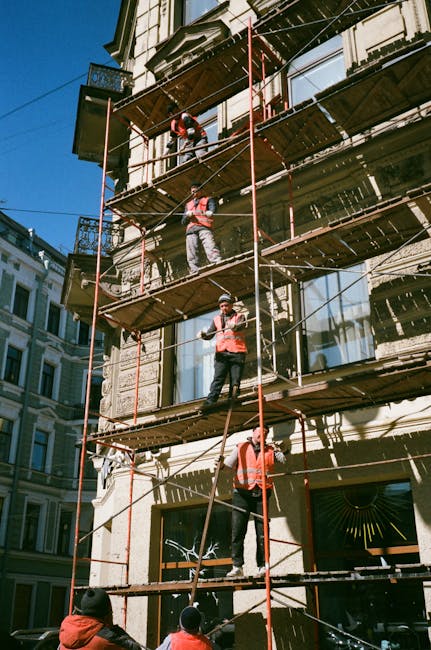NY & NJ Construction Accident Lawyers
A construction site injury can change everything. Medical bills, lost wages, and long recoveries put major strain on workers and families. We help injured workers pursue third‑party claims against owners, general contractors, subcontractors, and manufacturers, and in New York we leverage Labor Law protections such as §240(1) and §241(6) where they apply. In New Jersey, we pursue third-party negligence and product-liability claims under state law alongside your workers’ compensation benefits.
Your Rights After a Construction Accident
Workers’ compensation may cover medical care and a portion of lost wages, but it does not pay for pain and suffering. A separate third‑party claim can seek full damages when someone other than your employer was negligent, including site owners, general contractors, subcontractors, or product manufacturers.
Deadlines can be short, especially for claims involving public entities. Contact us promptly so we can preserve evidence and protect your rights.
Types of Construction Accident Cases We Handle
- Ladder and scaffold falls
- Falling object and struck‑by accidents
- Unsafe or defective tools and equipment
- Trench, excavation, and structure collapses
- Crane and forklift incidents
- Electrical shock and arc flash injuries
- Slip and trip hazards at active worksites
- Elevator, hoist, and material lift failures
New York Labor Law Protections
Construction workers in New York have strong legal protections when safety rules are ignored. Property owners and general contractors can be held strictly liable when violations of the Labor Law or Industrial Code result in injury. Bringing a successful claim often means navigating detailed statutory requirements, technical construction regulations, and complex motion practice.
Labor Law §240(1) – The Scaffold Law
This statute protects workers from elevation-related hazards. It covers falls from ladders or scaffolds as well as injuries from falling objects. If proper safety devices are missing or defective, owners and contractors can be held strictly liable.
Labor Law §241(6) – Industrial Code Violations
Section 241(6) allows injured workers to base claims on specific violations of New York’s Industrial Code. To succeed, the worker must show that a concrete safety regulation applied to the work, that it was violated, and that the violation caused the accident.
Labor Law §200 – General Duty to Provide a Safe Workplace
Section 200 requires property owners and general contractors to maintain reasonably safe worksites. Claims may involve dangerous conditions on the property or unsafe methods of performing work when the defendant had the authority to supervise or control the activity.
Schedule Your Free Case Review
Fast, free, and confidential case reviews — no fees unless we win.
Ladder and Scaffold Falls in New York and New Jersey
Falls from ladders and scaffolds cause some of the most serious construction injuries. In New York, Labor Law §240(1) can hold owners and general contractors liable when required safety devices are missing or fail, including ladders, scaffolds, guardrails, lifelines, and anchorage. In New Jersey, you may bring third-party negligence claims against non-employer entities, and when faulty equipment contributes, claims can also be made against manufacturers and sellers.
We move quickly to preserve proof. That includes photographs, incident reports, daily logs, safety meeting notes, OSHA materials, and the ladder or scaffold itself. We examine setup and tie-offs, planking, base footing, load ratings, harness and lanyard use, and site-specific safety plans to show how the fall could have been prevented.


Falling Object and Struck-By Accidents in New York and New Jersey
Unsecured tools, materials, or loads can strike workers with little warning. In New York, many falling-object cases involve Labor Law §240(1) when proper hoisting or securing devices were not provided. In New Jersey, third-party negligence claims can target owners, general contractors, subcontractors, rigging or crane companies, and, when equipment fails, product manufacturers.
Our investigation focuses on how and why the object fell. We secure video, witness statements, hoisting plans, rigging records, and evidence of overhead protection, toe boards, netting, tag lines, and storage practices at elevation. We identify every responsible party and document industry and OSHA standards to prove the breach and link it to your injuries.
